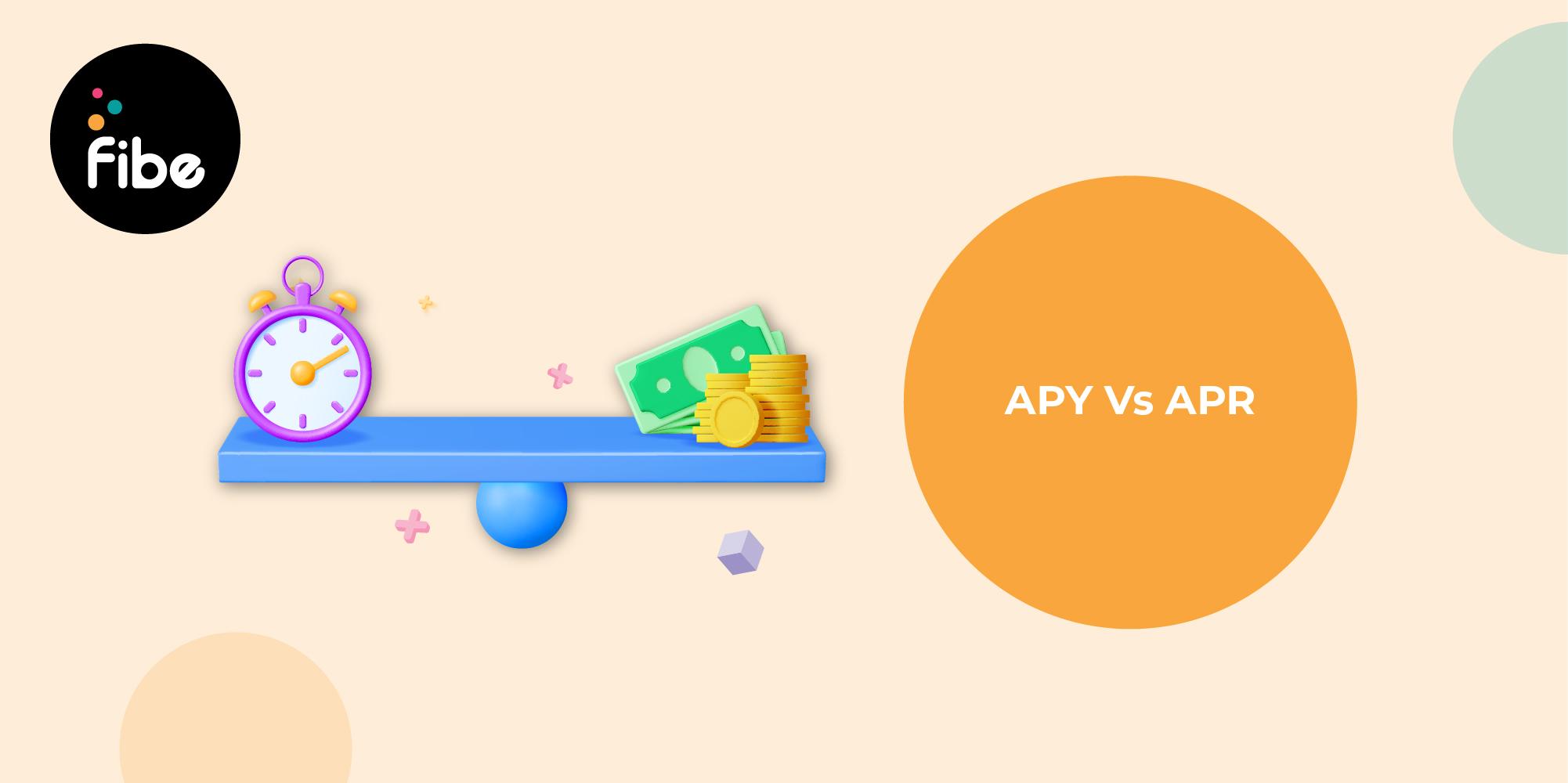- Home
- Blogs
- Personal Loan
- Difference Between Apr And Apy
Top APR Vs APY Differences: A Comprehensive Guide
- Updated on: 1 Aug 2024

The APR vs APY comparison is quite interesting as it focuses on interest calculations for two varied instruments. While the APY focuses on the gains you earn as an investor, the APR relates to the cost of borrowing. However, this isn’t the only difference between APR and APY.
Read on for insights to compare the annual percentage yield vs the annual percentage rate and to make informed decisions.
APR commonly known as Annual Percentage Rate, dictates the cost of borrowing. It mainly applies when you avail of credit and provides a more holistic overview of the amount you owe.
This is because the APR includes all associated charges applicable to the instrument. As such, you get a clearer picture of the total cost, which isn’t possible if you only assess the interest rate. Typically, the APR will include:
This list isn’t exhaustive but highlights a few charges you incur when you opt for a loan. It is also important to note that there are two types of APRs based on the interest rate.
Also Read: A Guide to Annual Percentage Rate (APR)
APY is the abbreviation for ‘Annual Percentage Yield’ and it dictates the actual rate at which your money grows in the given timeframe. This is where the difference between APR and APY is most apparent, but like the APR, the APY offers a clearer representation.
This is because the APY accounts for interest compounding, which affects the total earnings. For instance, suppose the interest rate you get is set at 8% for an investment of two years and the compounding frequency is quarterly. Then, the APY works out to 8.24%.
Do note that this is only applicable to investment instruments that have a compounding frequency. For simple interest instruments, the APY and the interest rate are identical.
Like the APR, the APY also has two types.
The following table highlights the main differences between APR and APY.
| Parameter | APR | APY |
|---|---|---|
| Applicability | Loans and revolving credit instruments | Investments |
| Interest calculation | Does not account for interest compounding | Accounts for interest compounding |
| Formula | ((Interest + Fees / Loan amount) / Number of days in loan term)) x 365 x 100 | (1 + r/n) n – 1 Here, r= interest rate, n= compounding frequency |
| Limitations | Doesn’t accurately represent the true cost of availing credit but it is a viable estimate to consider | Doesn’t account for the risks and any other external factors that can affect interest earnings |
Also Read: How to Manage Your Credit Card APR
APY rates move up and down often based on various factors. However, since it determines the rate of financial growth, a higher APY is always better. APY rates applicable to savings accounts are generally higher when the monetary policy is tight. In addition to that, there are saving accounts that are low-cost and high-yield in nature that consistently provide competitive APYs.
APR is the total cost associated with borrowing money. Therefore, a lower APR is better for you than a higher one. The rate will also vary based on the following:
In general, the best APR would be 0%. This means no interest on the borrowing, even if it’s for a short-term introductory period.
You can calculate APY easily using the following formula:
APY is (1+r/n) n – 1
In this formula,
Use the following formula to calculate APR:
APR= [{(Fees + Interest)/ Principal}/ n] *365*100
In this formula,
On comparing the annual percentage yield vs annual percentage rate differences, it is clear that these serve two very different purposes. The differences only matter when assessing the viability of loans and investment instruments.
This is because:
Remember, the APR and APY do not apply to the same instruments. You never have to choose between the two. As such, comparing the APR vs APY only helps when looking to understand more about the terms.
With answers to popular questions such as, ‘What is APR?’, ‘What is APY?’ and others, you can make better decisions when investing or borrowing. When it comes to the latter, always choose lenders that focus on transparency and affordability.
At Fibe, you can get an Instant Cash Loan of up to ₹5 lakhs and without worrying about any hidden charges. What’s more, you enjoy a completely digital journey alongside a flexible repayment experience. The funds you get have no end-use restrictions and you can foreclose the loan at no extra charges too.
Download our Personal Loan App or visit the website and get started today!
No. A key difference between APR and APY is that they are used for two different purposes. APR represents the true cost of borrowing and APY represents the interest you can earn from investments.
You can calculate both the APR and APY using digital calculators or by using their respective formulae, which are:
APR= ((Interest + Fees / Loan amount) / Number of days in loan term)) x 365 x 100
APY= (1 + r/n) n – 1, where ‘r’ is the interest rate and ‘n’ is the compounding frequency
When it comes to APR and APY, one cannot be better than the other because they are used for different instruments. The APR is for assessing loans and credit instruments. On the other hand, the APY is for investments because it accounts for interest compounding.